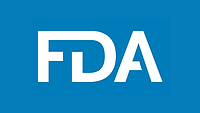FDA Highlights Foods Program Accomplishments in 2022

Credit: U.S. Food and Drug Administration (FDA)
Despite challenges that arose throughout 2022, the U.S. Food and Drug Administration’s (FDA’s) Foods Program achieved several goals, which were recently highlighted by the agency. Specifically, FDA made advancements related to the Food Safety Modernization Act (FSMA), the New Era of Smarter Food Safety, the Closer to Zero initiative, and modernization.
A major difficulty FDA faced in 2022 was the infant formula safety and supply crisis, beginning with a recall of Abbott Nutrition products due to illnesses caused by powdered infant formula that was contaminated with Cronobacter sakazakii. Work that FDA completed in response to the crisis included exercising enforcement discretion to expand access to infant formula, as well as outlining a prevention strategy for Cronobacter sakazakii and powdered infant formula.
FDA was still able to make progress in several areas, however. Food safety advancement made by the agency in 2022 include:
- Releasing the 2022 FDA Food Code
- Issuing the Food Traceability Final Rule, fulfilling Section 204(d) of FSMA
- Continuing work to finalize the pre-harvest agricultural water requirements for covered produce other than sprouts under the Produce Safety Rule
- Building an online Agricultural Water Assessment Builder to help farms understand the proposed requirements for an agricultural water assessment in the Agricultural Water Proposed Rule
- Releasing the first in a series of commodity-specific prevention strategies
- Training more than 1,000 FDA staff to recognize elements of food safety culture in food operations
- Establishing Domestic Mutual Reliance partnerships with Iowa, Minnesota, and Virginia
- Entering a Memorandum of Understanding between FDA and the U.S. Centers for Disease Control and Prevention (CDC) to strengthen food safety in retail and foodservice establishments
- Releasing Activities for the Safety of Imported Produce to detail how FDA is working to enhance the safety of fresh fruits and vegetables
- Increasing examination and sample collection for imported shrimp from the three largest exporting countries, as well as collaborating with foreign governments to provide training and outreach events focusing on seafood safety and import requirements
- Enhancing regulatory oversight of foreign firms that FDA cannot routinely inspect by leveraging tools such as the Foreign Supplier Verification Program, remote regulatory assessments, importer seafood inspections, and sampling
- Making available the testing results for per-and polyfluoroalkyl substances (PFAS) in seafood samples collected at retail
- Advancing the Closer to Zero initiative by studying how seafood consumption contributes to children’s mercury intake, as well as issuing a draft guidance for industry on action levels for lead in single-strength juices and juice blends
- Entering the third phase of FDA’s Artificial Intelligence (AI) Imported Seafood Pilot program, which uses AI and machine learning to help predict noncompliant import shipments.
Looking for a reprint of this article?
From high-res PDFs to custom plaques, order your copy today!





